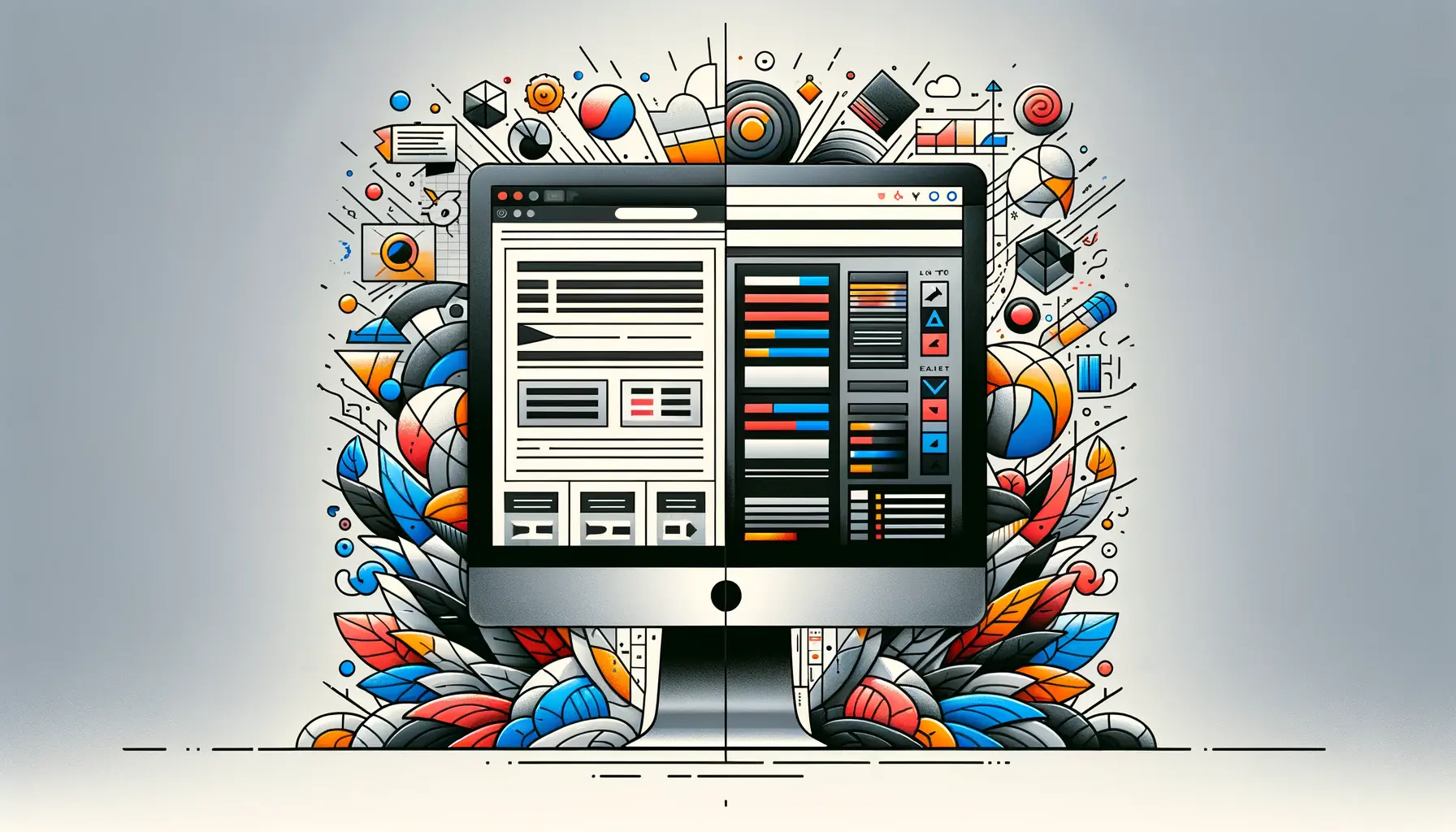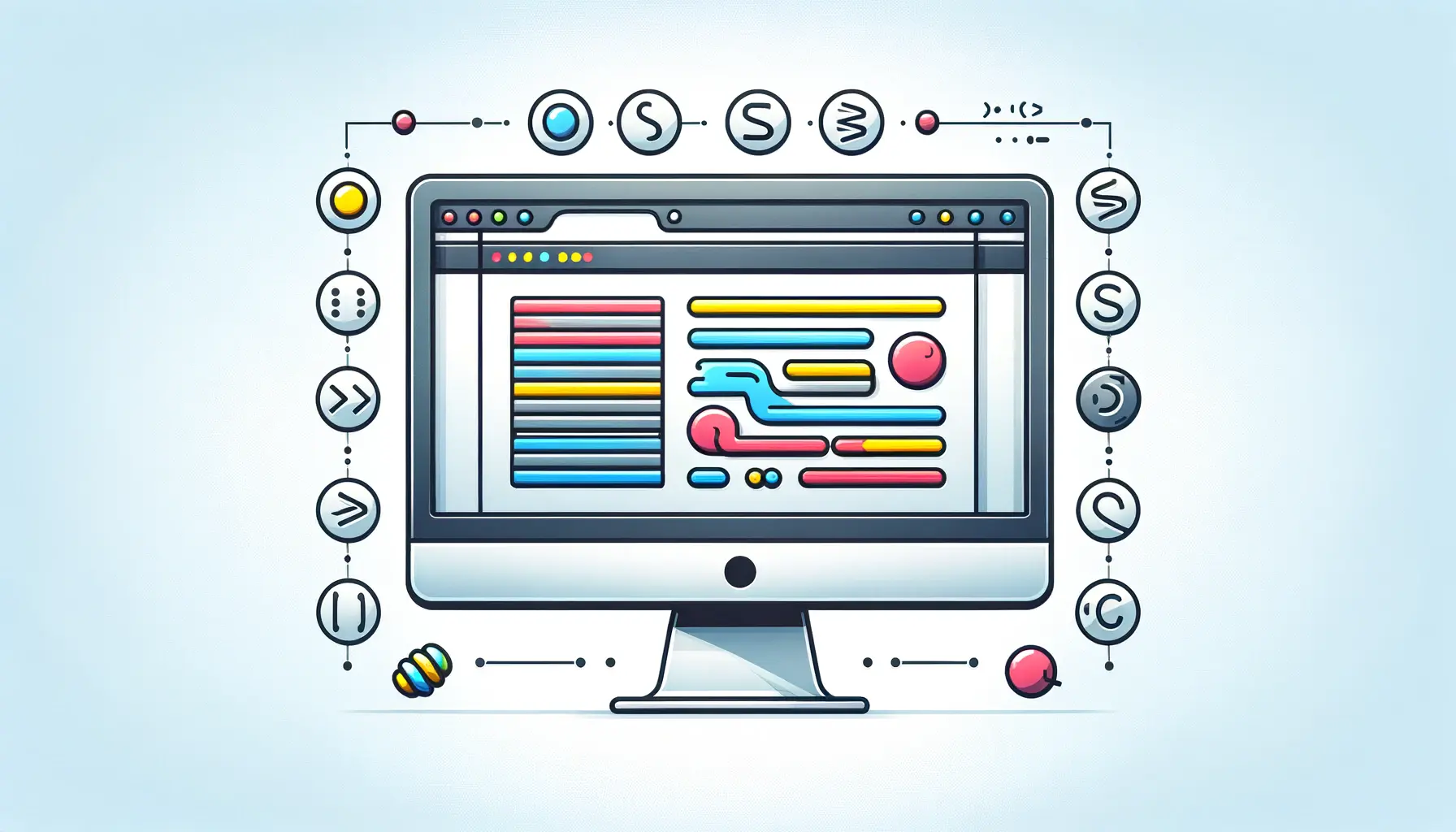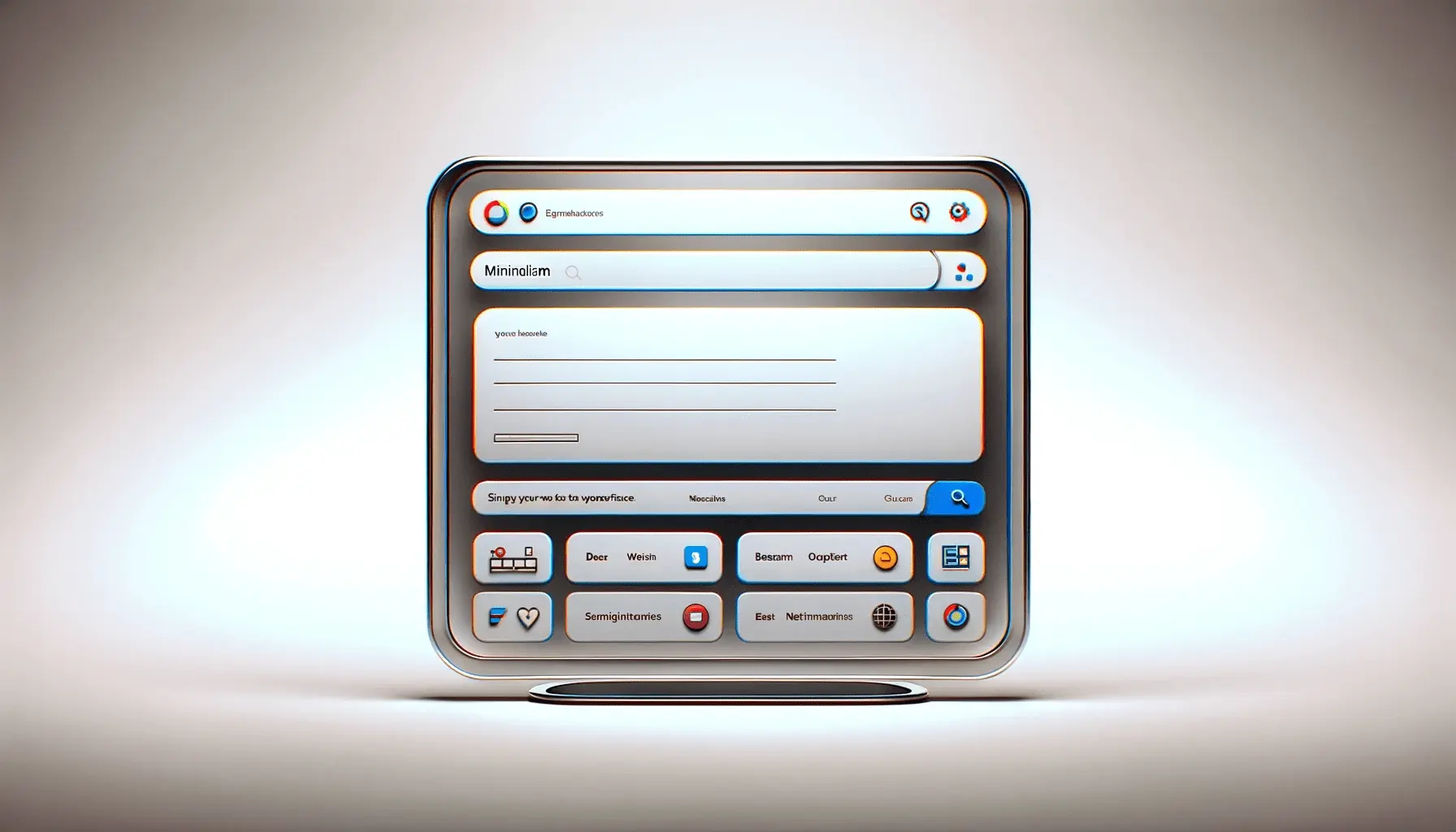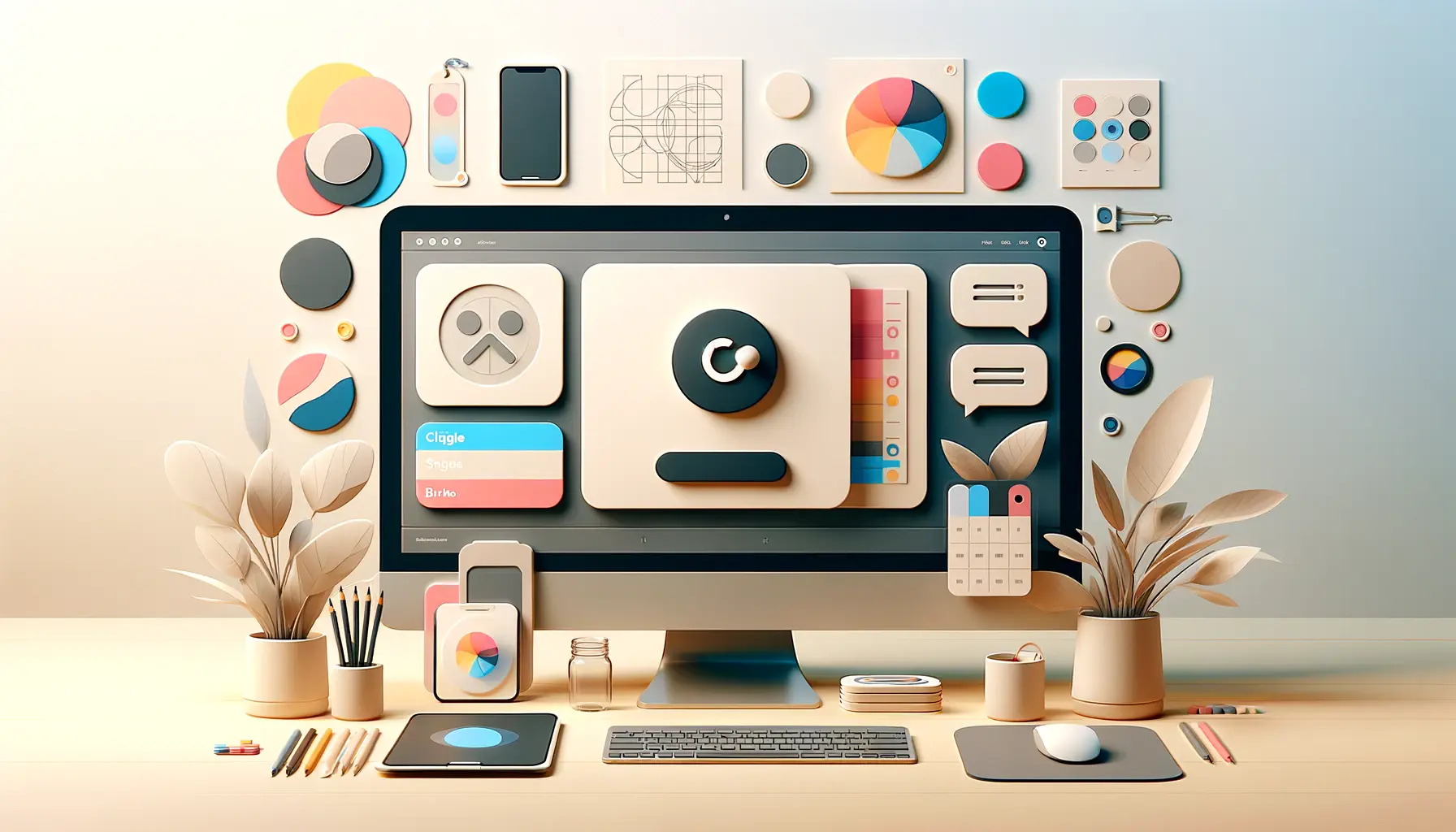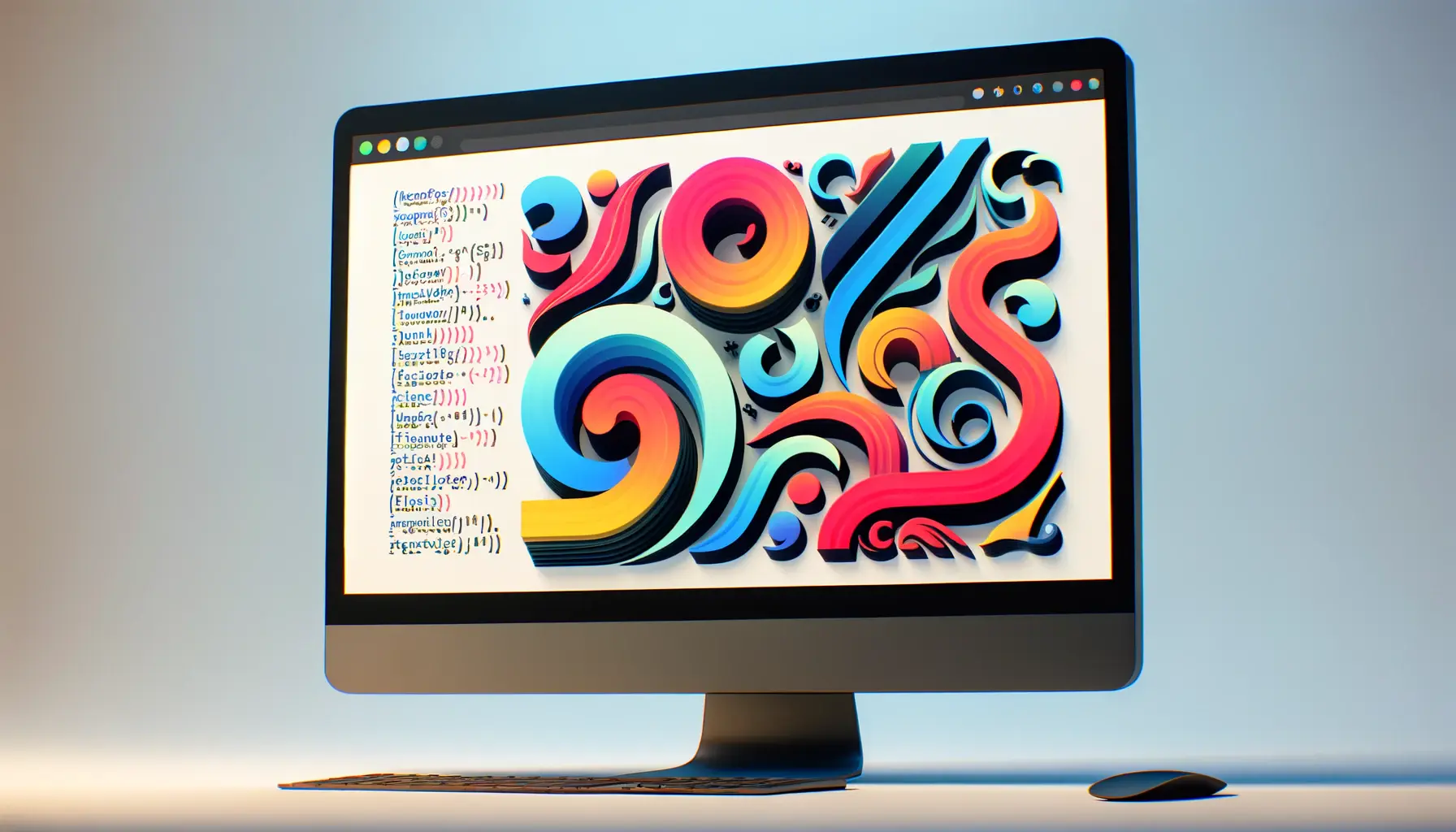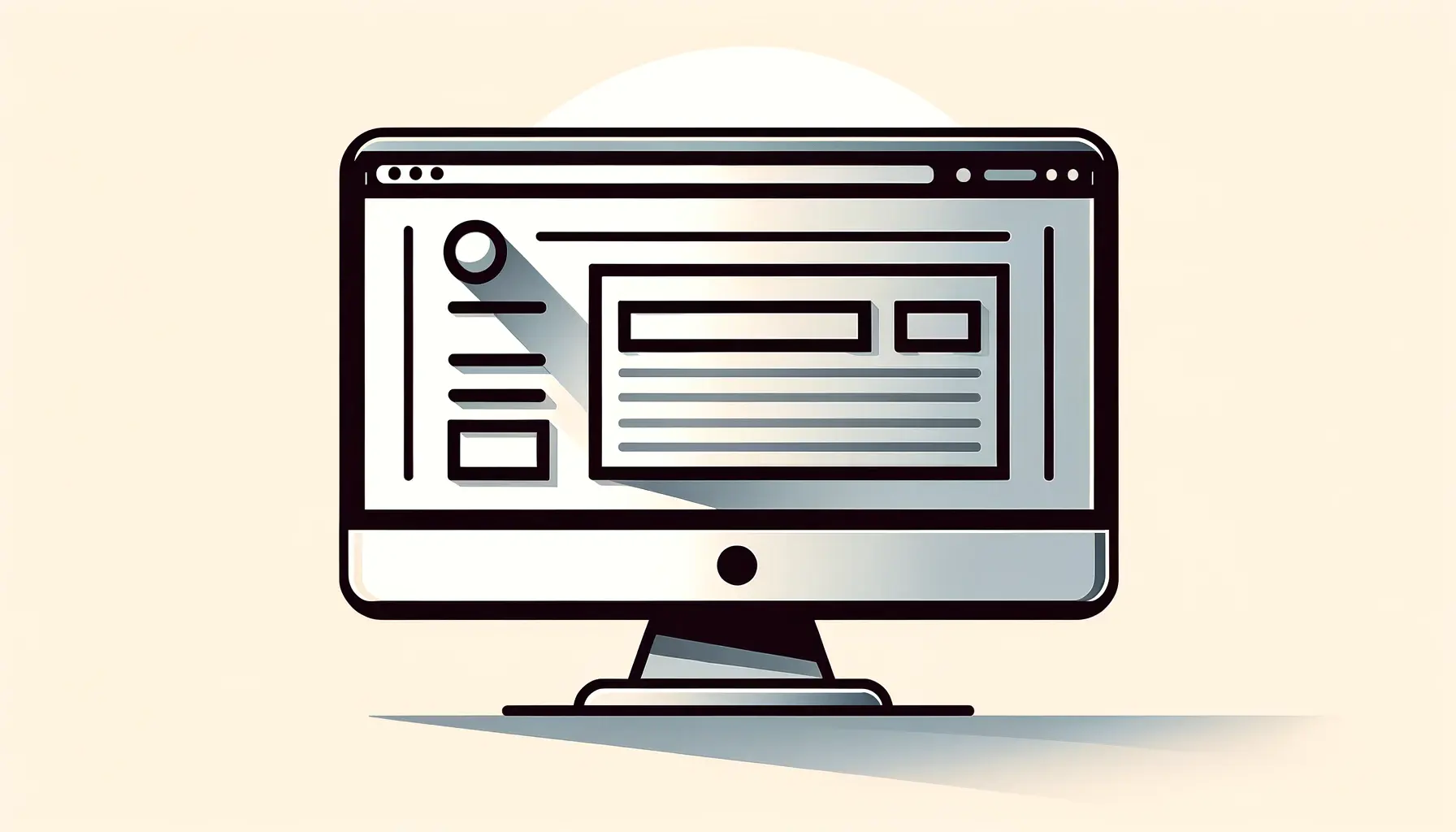The realm of web development has witnessed a significant transformation over the years, with Cascading Style Sheets (CSS) emerging as a pivotal force in shaping user experience (UX) design.
This evolution underscores the importance of CSS in creating visually appealing, functional, and accessible websites.
By influencing layout, color schemes, typography, and interactive elements, CSS plays a crucial role in the overall perception and usability of digital platforms.
The impact of CSS on UX design is profound, as it directly affects how users interact with and perceive a website, thereby influencing satisfaction, engagement, and ultimately, the success of the website.
Understanding the nuances of CSS and its application in UX design is essential for developers and designers alike.
It’s not just about making sites look attractive; it’s about crafting user-centric experiences that are intuitive, inclusive, and engaging.
The strategic use of CSS can enhance the functionality of a website, improve its accessibility, and ensure a seamless experience across different devices and screen sizes.
This article delves into the multifaceted role of CSS in UX design, exploring how it shapes user experiences, drives engagement, and facilitates the creation of responsive and adaptive designs.
Foundations of CSS in UX Design
The inception of CSS as a stylesheet language was a game-changer in web development.
It introduced a separation of content from presentation, allowing designers to create stylistic choices that could be applied consistently across multiple web pages.
This separation not only streamlined the development process but also opened up new avenues for creativity and innovation in design.
The foundational role of CSS in UX design lies in its ability to control layout, color, typography, and other visual elements, making it a critical tool for conveying brand identity and enhancing the aesthetic appeal of a website.
Moreover, CSS facilitates the creation of flexible and responsive designs that adapt to the user’s device, whether it’s a desktop, tablet, or smartphone.
This adaptability is crucial for providing an optimal user experience, as it ensures that content is accessible and legible across all platforms.
The use of media queries, a feature of CSS, allows designers to tailor the presentation of content to different screen sizes, orientations, and resolutions, thereby improving usability and satisfaction.
Enhancing Usability with CSS
At the heart of UX design is usability – the ease with which users can navigate and interact with a website.
CSS plays a vital role in enhancing usability by providing the tools to create clear, navigable, and intuitive interfaces.
Through the strategic use of layout, spacing, and interactive elements, CSS can guide users through a website, highlighting important information and facilitating the completion of desired actions.
This not only improves the user experience but also contributes to higher conversion rates and user retention.
Interactive elements such as buttons, links, and forms are essential components of web design, and CSS is instrumental in making these elements both functional and appealing.
By styling these elements for visibility and ease of use, and by incorporating feedback mechanisms like hover and focus states, designers can create a more engaging and interactive experience for users.
This level of interactivity encourages user participation and fosters a positive perception of the website.
CSS’s role in UX design extends beyond aesthetics, deeply influencing usability, accessibility, and user satisfaction.
Accessibility and Inclusion through CSS
Accessibility is a critical aspect of UX design, ensuring that websites are usable by people of all abilities and disabilities.
CSS is a powerful tool in the web developer’s toolkit for enhancing accessibility.
By enabling flexible design options, CSS allows for the creation of websites that are more accessible to users with diverse needs, including those who rely on screen readers or require high-contrast visuals for readability.
One of the key ways CSS contributes to accessibility is through its ability to control visual presentation.
Designers can use CSS to specify font sizes, colors, and contrast ratios that comply with accessibility standards, such as the Web Content Accessibility Guidelines (WCAG).
This ensures that content is perceivable for users with visual impairments.
Additionally, CSS can be used to create layouts that are logical and easy to navigate, further enhancing the user experience for individuals relying on assistive technologies.
Responsive Design with CSS
The proliferation of mobile devices has made responsive design an essential aspect of UX design.
CSS plays a pivotal role in creating responsive websites that adapt their layout and content to fit the screen size and orientation of the user’s device.
This adaptability improves the user experience by ensuring that websites are easy to read and navigate, regardless of the device used to access them.
- Media Queries: CSS media queries enable designers to apply different styles based on the characteristics of the user’s device, such as width, height, and orientation. This allows for the creation of flexible layouts that look great on any screen size.
- Flexible Grids: CSS enables the creation of flexible grid systems that adjust to the screen size. By using relative units like percentages rather than fixed units, elements on the page can resize fluidly, maintaining the integrity of the design across devices.
- Flexible Images: CSS also allows images to be made flexible, so they can scale up or down depending on the screen size, ensuring that they do not break the layout or become too small to be functional.
Enhancing User Engagement with CSS Animations
CSS animations and transitions are powerful tools for enhancing user engagement and interaction.
They can be used to guide users’ attention, provide feedback on actions, and make the user experience more dynamic and enjoyable.
CSS animations add a layer of polish and sophistication to web designs, contributing to a more immersive user experience.
However, it’s important to use animations judanly.
Excessive or unnecessary animations can detract from the user experience, especially for users with motion sensitivity.
CSS provides the flexibility to implement animations that enhance the user experience without overwhelming users, by allowing designers to control the timing, duration, and complexity of animations.
Effective use of CSS enhances accessibility and responsiveness, making websites more inclusive and user-friendly.
Optimizing Performance with CSS
Website performance is a critical component of the user experience.
The speed at which a website loads and becomes interactive can significantly impact user satisfaction, engagement, and conversion rates.
CSS, while primarily known for its role in styling, also plays a significant part in optimizing web performance.
Efficient use of CSS can reduce page load times, improve responsiveness, and contribute to a smoother user experience.
One of the key strategies for optimizing performance with CSS involves minimizing file sizes.
This can be achieved through techniques such as compressing CSS files, using shorthand notation, and eliminating unused styles.
Additionally, the order in which CSS files are loaded can affect page render times; prioritizing critical CSS and deferring non-essential styles can enhance the perceived speed of a website.
Improving Load Times with CSS
- CSS Minification: Minifying CSS files by removing whitespace, comments, and unnecessary characters can significantly reduce file sizes, leading to faster load times.
- Use of Shorthand Properties: CSS offers shorthand properties that can combine multiple declarations into one, reducing the amount of code and thereby decreasing file size.
- Eliminating Unused CSS: Over time, websites can accumulate styles that are no longer used. Tools like PurifyCSS can help identify and remove these unused styles, streamlining CSS files and improving performance.
Enhancing Responsiveness with CSS
Responsiveness is not just about adjusting layouts to fit different screen sizes; it’s also about ensuring that interactions remain smooth and responsive across devices.
CSS can influence this aspect by optimizing visual effects and animations to ensure they do not cause lag or reduce responsiveness.
Using hardware-accelerated CSS properties, for example, can leverage GPU processing for smoother animations and transitions, enhancing the overall user experience.
Furthermore, CSS’s role in responsive design extends to loading strategies.
Responsive images, defined using CSS, ensure that the appropriate image size is loaded based on the user’s device, reducing unnecessary data usage and improving load times.
This approach demonstrates how CSS’s capabilities can be harnessed to not only create visually appealing designs but also to optimize performance and responsiveness.
Optimizing CSS not only improves website aesthetics but also enhances its performance, contributing to a better user experience.
SEO Optimization and CSS
Search Engine Optimization (SEO) is a crucial aspect of web development that affects a website’s visibility and ranking in search engine results pages (SERPs).
While the primary focus of SEO is often on content and metadata, CSS plays a significant role in optimizing a website for search engines.
Proper use of CSS can improve a site’s load time, mobile-friendliness, and overall user experience, all of which are factors considered by search engines when ranking websites.
One of the ways CSS contributes to SEO is through the structuring of content.
By using CSS to separate content from layout, developers can ensure that the most important content is prioritized in the HTML, making it more accessible to search engine crawlers.
This separation allows for cleaner code, which is easier for search engines to parse and index, potentially improving a site’s SEO performance.
Mobile Optimization with CSS
With the increasing prevalence of mobile internet usage, search engines have begun to prioritize mobile-friendly websites in their rankings.
CSS is instrumental in creating responsive designs that adapt to any screen size, ensuring a positive user experience on mobile devices.
By employing responsive design techniques, websites can improve their mobile usability, a key factor in SEO ranking algorithms.
Additionally, CSS can be used to hide or display content based on the device, allowing developers to tailor the user experience for mobile users without affecting the content’s SEO value.
This technique ensures that all users, regardless of device, have access to the same content, while also optimizing the layout and presentation for each device type.
Improving Site Speed with CSS
Site speed is another critical factor in SEO, as faster websites are more likely to rank higher in search results.
CSS plays a role in optimizing site speed by controlling the visual elements that can slow down page loading times.
Efficient use of CSS, including minimizing file sizes, using CSS sprites, and optimizing critical rendering paths, can significantly reduce load times.
Faster load times not only improve a site’s SEO ranking but also enhance the user experience, leading to higher engagement and conversion rates.
Moreover, CSS allows for the implementation of lazy loading, a technique where images and other media are only loaded when they are needed, such as when they enter the viewport.
This can drastically reduce initial page load times, making the site more appealing to both users and search engines.
Leveraging CSS for SEO involves more than just design; it’s about optimizing the structure, speed, and responsiveness of a website to improve its search engine ranking.
CSS Best Practices for UX Design
Adhering to best practices in CSS is essential for creating effective, efficient, and engaging user experiences.
These practices not only help in achieving a visually appealing design but also ensure that the website is accessible, performant, and easy to maintain.
By following these guidelines, developers and designers can leverage CSS to its full potential, enhancing the overall user experience.
One of the foundational best practices is to keep CSS organized and modular.
This approach facilitates easier maintenance, updates, and scalability of the website’s design.
Additionally, employing a responsive design strategy is crucial for meeting the diverse needs of users across different devices.
Organizing CSS Effectively
- Use a Preprocessor: Tools like Sass or LESS can help manage complex stylesheets, allowing for variables, mixins, and nested rules that make CSS more maintainable and readable.
- Modularize Styles: Breaking down stylesheets into smaller, component-based files (e.g., header, footer, buttons) can simplify development and maintenance.
- Adopt a Naming Convention: Consistent naming conventions, such as BEM (Block, Element, Modifier), can improve readability and reduce the likelihood of style conflicts.
Enhancing Accessibility with CSS
Accessibility should be a priority in UX design, and CSS provides several ways to improve it.
By focusing on visual clarity, keyboard navigability, and adaptive designs, developers can create more inclusive websites.
- Ensure Sufficient Contrast: Use CSS to maintain high contrast ratios for text and interactive elements, making them readable for users with visual impairments.
- Keyboard-Friendly Design: Style focus states for interactive elements to make them easily navigable with a keyboard, enhancing usability for users with mobility impairments.
- Use ARIA Roles: Although not strictly CSS, combining CSS with ARIA (Accessible Rich Internet Applications) roles can enhance the accessibility of web components, making them more understandable to screen reader users.
Responsive Design Techniques
Responsive design is no longer optional in the mobile-first world we live in.
CSS is at the forefront of creating responsive and adaptive designs that ensure an optimal viewing experience across all devices.
- Media Queries: Employ media queries to apply different styles based on device characteristics like width, height, and resolution.
- Flexible Layouts: Use fluid grids and flexible images to create layouts that adapt to any screen size, improving the user experience on mobile devices.
- Viewport Units: Utilize viewport units (vw, vh, vmin, vmax) for sizing elements relative to the viewport, allowing for more dynamic and responsive designs.
Following CSS best practices is crucial for developing user-centric websites that are accessible, responsive, and maintainable.
Case Studies: CSS in Action
Examining real-world applications of CSS in enhancing user experience design offers valuable insights into its potential and versatility.
Through specific case studies, we can observe how CSS has been instrumental in solving complex design challenges, improving website performance, and creating innovative user interfaces.
These examples highlight the strategic use of CSS to achieve remarkable outcomes in UX design.
Improving Website Load Time
A notable case study involves a popular e-commerce platform that implemented critical CSS techniques to enhance its site speed.
By identifying and inlining the CSS necessary for rendering the above-the-fold content and deferring the rest, the platform significantly reduced its initial load time.
This optimization led to a marked improvement in user engagement, with a notable increase in conversion rates.
The strategic use of CSS not only improved the site’s performance but also its SEO ranking, demonstrating the multifaceted benefits of CSS optimization.
Responsive Redesign for a News Portal
Another example comes from a leading news portal that underwent a comprehensive responsive redesign to improve accessibility and user experience across devices.
By employing a mobile-first approach and utilizing CSS media queries, the portal successfully implemented a design that adapts seamlessly to various screen sizes.
This redesign resulted in a significant uptick in mobile traffic and user retention, showcasing the critical role of CSS in responsive web design.
Enhancing User Engagement with CSS Animations
A creative agency leveraged CSS animations to create an immersive storytelling experience on their website.
Through subtle animations and transitions, they were able to guide users through their portfolio, increasing engagement and time spent on the site.
This case study exemplifies how CSS can be used to not only enhance the aesthetic appeal of a website but also to strategically engage users and convey information in an interactive manner.
These case studies underscore the transformative impact of CSS on user experience design.
By addressing specific user needs and challenges, CSS enables designers and developers to create more engaging, efficient, and accessible websites.
The versatility and power of CSS in these real-world applications highlight its importance as a tool for innovative and user-centric web design.
Misconceptions about CSS’s role being limited to superficial design aspects are debunked by its strategic application in improving UX, performance, and accessibility.
Future Trends in CSS for UX Design
The landscape of web development is constantly evolving, with new technologies and techniques emerging to enhance user experience design.
CSS, as a cornerstone technology, continues to evolve, offering new possibilities for creating more intuitive, engaging, and accessible websites.
Looking ahead, several trends in CSS are poised to shape the future of UX design, reflecting the ongoing innovation in web development.
Advancements in CSS Modules
The development and adoption of CSS modules represent a significant trend in web design.
These modules, such as CSS Grid Layout and CSS Flexbox, provide developers with more sophisticated tools for creating complex layouts that are both responsive and efficient.
The future will likely see increased use of these modules, enabling designers to implement intricate designs with greater ease and precision.
Increased Focus on Dark Mode
- Dark Mode CSS: With the rising popularity of dark mode preferences among users, CSS will play a crucial role in facilitating this feature. Using media queries, websites can automatically switch to dark mode based on user preference or system settings, enhancing visual comfort and reducing eye strain.
- User Preference Recognition: CSS will continue to evolve to better recognize and adapt to user preferences, including dark mode, contrast settings, and reduced motion preferences, making websites more accessible and personalized.
Enhancement of CSS for Better Accessibility
As web accessibility becomes a higher priority, CSS is expected to introduce more features aimed at improving website accessibility.
This includes better support for screen readers, keyboard navigation, and high-contrast modes.
Enhancements in CSS will make it easier for developers to create websites that are inclusive and accessible to all users, regardless of their abilities or disabilities.
Integration with Emerging Technologies
- Variable Fonts: CSS’s support for variable fonts allows for more flexible and creative typography on the web. This not only reduces the need for multiple font files but also opens up new possibilities for dynamic text styling and animation.
- Augmented Reality (AR) and Virtual Reality (VR): As AR and VR technologies become more mainstream, CSS will likely play a role in integrating these experiences into web design, offering new ways to engage users and present content.
These trends indicate a future where CSS continues to be a vital tool in the UX designer’s toolkit, driving innovation and improving the web experience for users.
As CSS evolves, it will offer even more opportunities for creating user-centric designs that are not only visually appealing but also highly functional and accessible.
The ongoing development of CSS standards and capabilities promises to keep it at the forefront of web design innovation, shaping the future of user experience design in profound ways.
The future of CSS in UX design is bright, with advancements that promise to enhance accessibility, responsiveness, and user engagement through innovative web design practices.
Embracing the Future with CSS: A Conclusion
The exploration of CSS’s impact on user experience design throughout this article underscores its indispensable role in the web development ecosystem.
From enhancing accessibility and responsiveness to optimizing performance and SEO, CSS has proven to be a powerful tool in creating engaging, efficient, and inclusive digital experiences.
As we’ve seen, the strategic application of CSS can significantly influence a website’s aesthetic appeal, usability, and overall success.
The Transformative Power of CSS
CSS’s ability to transform the user experience cannot be overstated.
By facilitating responsive design, CSS ensures that websites can be accessed and navigated seamlessly across a multitude of devices, thereby reaching a wider audience.
Moreover, its role in implementing accessible web designs highlights the importance of inclusivity in the digital age, ensuring that websites cater to users with diverse needs and preferences.
The case studies highlighted in this article further illustrate the practical benefits of CSS, showcasing real-world examples of how it has been leveraged to overcome design challenges and achieve business objectives.
Looking Ahead: CSS and the Future of UX Design
The future of CSS in UX design is marked by exciting possibilities.
With advancements in CSS modules, increased focus on dark mode, and the integration of emerging technologies, CSS is set to offer even more sophisticated tools for designers and developers.
These developments promise to enhance the flexibility, creativity, and effectiveness of web design, enabling the creation of experiences that are not only visually captivating but also deeply resonant with users.
- The evolution of CSS modules will simplify the creation of complex and dynamic layouts, pushing the boundaries of what can be achieved with web design.
- As user preferences continue to evolve, CSS will adapt, offering more personalized and comfortable browsing experiences through features like dark mode and preference recognition.
- The emphasis on accessibility will grow, with CSS leading the charge in making the web more inclusive for users with disabilities.
- Emerging technologies such as AR and VR will intersect with CSS, opening new avenues for interactive and immersive web experiences.
In conclusion, the impact of CSS on user experience design is profound and far-reaching.
As we look to the future, it’s clear that CSS will continue to play a pivotal role in shaping the web.
By staying abreast of the latest developments in CSS and adhering to best practices, designers and developers can harness its full potential to create websites that are not only aesthetically pleasing but also highly functional, accessible, and engaging.
The journey of CSS in enhancing user experience design is ongoing, and its continued evolution promises to bring even more innovative and user-centric solutions to the forefront of web design.
Quality web design is key for a great website! Check out our service page to partner with an expert web design agency.
CSS and User Experience Design: FAQs
Explore common questions about the role of CSS in enhancing user experience design, offering insights into its importance and application.
CSS is crucial for UX design as it controls the visual presentation of websites, enabling responsive, accessible, and visually appealing designs that enhance user satisfaction and engagement.
Yes, CSS significantly improves website accessibility by allowing developers to create designs that are usable for people with various disabilities, enhancing the overall inclusivity of the web.
CSS enhances mobile UX by enabling responsive design, ensuring websites adapt seamlessly to different screen sizes and orientations, providing a consistent and optimal viewing experience across devices.
CSS plays a pivotal role in web performance by allowing for the optimization of page load times and responsiveness, directly influencing user experience and satisfaction.
Yes, CSS animations can significantly enhance user engagement by creating dynamic, interactive, and visually appealing web experiences that capture and retain user attention.
Learning CSS is essential for UX designers as it provides them with the ability to directly influence the visual and interactive aspects of a website, enhancing the user experience.
CSS contributes to SEO by improving website speed, mobile-friendliness, and user experience, all of which are factors considered by search engines when ranking websites.
Future CSS trends likely to impact UX design include advancements in CSS modules, increased focus on dark mode, and improved support for accessibility, offering new opportunities for innovative design.
